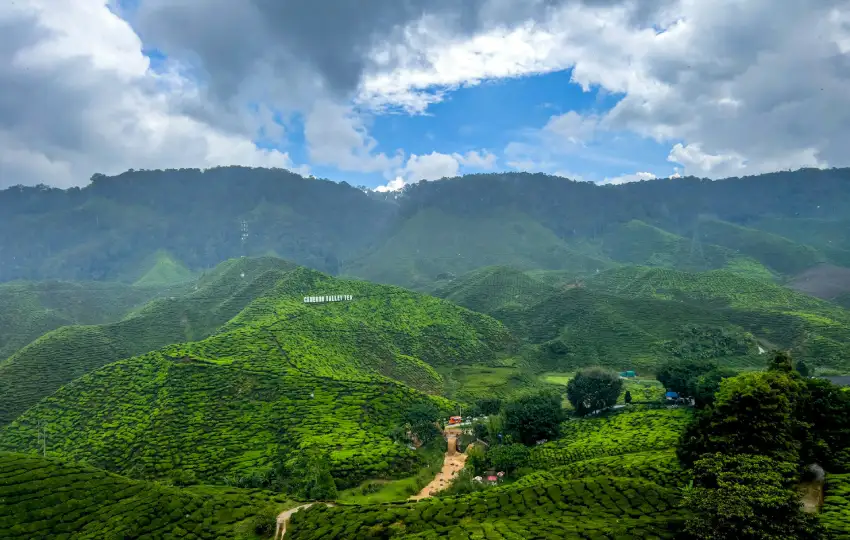Imagine standing in a Costa Rican rainforest, the air thick with the scent of damp earth and the chatter of toucans overhead. You’re not just a tourist snapping photos—you’re part of a movement that protects this vibrant ecosystem. Eco-tourism, a travel philosophy centered on sustainability, is transforming how we explore the world. According to the United Nations World Tourism Organization (UNWTO), eco-tourism accounts for 20% of global travel, growing three times faster than traditional tourism. This 2,500-word article explores eco-tourism’s role in minimizing environmental impact, weaving together real-world examples, practical tips, and a call to embrace sustainable travel.
What Is Eco-Tourism?
Eco-tourism is travel that prioritizes environmental conservation, supports local communities, and educates visitors about ecosystems. The International Ecotourism Society defines it as “responsible travel to natural areas that conserves the environment and improves the well-being of local people.” Unlike mass tourism, which often strains resources, eco-tourism seeks harmony with nature.
Core Principles of Eco-Tourism
Eco-tourism isn’t just a buzzword—it’s a commitment to specific values that guide sustainable travel. These principles ensure minimal environmental harm and maximum community benefit.
Environmental Conservation
Eco-tourism focuses on protecting natural habitats. For example, Costa Rica’s Monteverde Cloud Forest Reserve uses visitor fees to preserve 26,000 acres of biodiversity. This approach reduces deforestation and supports wildlife.
Community Empowerment
Local communities are at the heart of eco-tourism. In Kenya’s Maasai Mara, lodges like Basecamp Maasai Mara employ locals and fund schools, ensuring tourism benefits the region’s people.
Education and Awareness
Eco-tourism educates travelers about ecosystems and cultures. Guided tours in Australia’s Great Barrier Reef teach visitors about coral bleaching, inspiring them to advocate for marine conservation.
Why Eco-Tourism Matters
The tourism industry contributes 8% of global carbon emissions, per a 2023 Nature Climate Change study. Eco-tourism counters this by promoting low-impact travel. It protects endangered species, preserves habitats, and supports sustainable development, making it a vital tool for environmental stewardship.
Combating Climate Change
Eco-tourism reduces carbon footprints through sustainable practices. For instance, eco-lodges in Costa Rica use solar power and composting, cutting emissions by up to 60% compared to traditional hotels.
Preserving Biodiversity
By funding conservation, eco-tourism protects ecosystems. In Borneo, eco-tours to see orangutans have reduced illegal logging, helping preserve habitats for 15,000 remaining orangutans.
Supporting Local Economies
Eco-tourism channels revenue to local communities. In Rwanda, gorilla trekking permits costing $1,500 fund park rangers and community projects, reducing poverty in rural areas.
How Eco-Tourism Minimizes Environmental Impact
Eco-tourism employs practical strategies to reduce harm to the planet. From low-carbon transport to waste reduction, these efforts make travel sustainable without sacrificing adventure.
Low-Impact Accommodations
Eco-lodges and campsites prioritize sustainability. In Patagonia, EcoCamp uses geodesic domes powered by renewable energy, minimizing environmental disruption.
Energy Efficiency
Eco-lodges use solar panels, wind turbines, or hydropower. For example, Fiji’s Jean-Michel Cousteau Resort cuts energy use by 50% with solar water heaters.
Waste Management
Composting and recycling are standard in eco-tourism. In the Galápagos, lodges like Finch Bay recycle 80% of waste, keeping islands pristine.
Sustainable Transportation
Eco-tourism promotes low-carbon travel. In Bhutan, electric vehicles and biking trails reduce emissions, while guided treks replace fuel-heavy tours.
Carbon Offsetting
Many eco-tour operators offer carbon offset programs. For instance, Intrepid Travel partners with carbon-neutral projects to balance emissions from flights.
Responsible Wildlife Interaction
Eco-tourism ensures animals aren’t exploited. In Thailand, sanctuaries like Elephant Nature Park focus on rehabilitation, banning rides to protect elephants.
Table: Eco-Tourism vs. Traditional Tourism
| Aspect | Eco-Tourism | Traditional Tourism |
|---|---|---|
| Environmental Impact | Low; uses renewable energy, reduces waste | High; contributes to pollution, deforestation |
| Community Benefit | High; supports local jobs, education | Variable; often benefits large corporations |
| Education Focus | Strong; teaches conservation, culture | Minimal; focuses on entertainment |
| Carbon Footprint | Low; promotes offsets, green transport | High; relies on flights, large resorts |
| Wildlife Interaction | Ethical; prioritizes animal welfare | Often exploitative; e.g., animal rides |
Comparing Eco-Tourism Destinations
Eco-tourism thrives in diverse regions, each with unique approaches. Costa Rica leads with 25% of its land as protected areas, while Bhutan’s “high-value, low-volume” model limits visitors to preserve culture. Australia’s eco-tours focus on marine conservation, whereas Rwanda emphasizes community-led wildlife protection.
Pros and Cons of Eco-Tourism
Pros:
- Environmental Protection: Funds habitat restoration, like coral replanting in the Maldives.
- Cultural Preservation: Supports indigenous practices, as seen in Peru’s Amazon eco-lodges.
- Economic Benefits: Creates jobs; eco-tourism employs 20% of Costa Rica’s workforce.
Cons:
- Higher Costs: Eco-tours, like Rwanda’s gorilla trekking, can be expensive.
- Greenwashing Risk: Some operators falsely claim eco-friendly practices.
- Limited Access: Remote locations may exclude budget travelers.
People Also Ask (PAA)
What is eco-tourism in simple terms?
Eco-tourism is travel that protects nature, supports local communities, and educates visitors about sustainability. It’s about exploring responsibly.
Where can I find eco-tourism destinations?
Check organizations like The International Ecotourism Society (www.ecotourism.org) or Sustainable Travel International for certified eco-destinations.
How does eco-tourism help the environment?
It reduces carbon emissions, funds conservation, and minimizes waste, helping preserve ecosystems like rainforests and coral reefs.
What are the best eco-tourism activities?
Activities include wildlife safaris, coral reef snorkeling, and cultural tours that prioritize sustainability and local engagement.
Personal Story: A Journey to Sustainability
Two summers ago, I joined an eco-tour in Belize, snorkeling in the barrier reef and staying at a solar-powered lodge. Our guide, a local marine biologist, shared how overfishing nearly collapsed the reef’s ecosystem. Planting coral fragments with the group felt like giving back to the ocean. That trip taught me that travel can be a force for good, not just a getaway.
How to Engage in Eco-Tourism
Informational Resources
- What is Eco-Tourism? Learn the basics at www.ecotourism.org or WWF’s sustainable travel guides.
- Benefits of Eco-Tourism: Studies from UNWTO highlight its role in reducing emissions by up to 30% compared to traditional travel.
Navigational Tools
- Where to Find Eco-Tours: Websites like Responsible Travel (www.responsibletravel.com) list vetted operators worldwide.
- Certifications to Look For: Seek Green Globe or Rainforest Alliance certifications for authentic eco-experiences.
Transactional Support
- Best Tools for Eco-Travel: Apps like Green Globe help find sustainable accommodations, while platforms like BookDifferent calculate carbon footprints.
- Eco-Friendly Gear: Brands like Patagonia offer sustainable travel gear, reducing environmental impact.
FAQ Section
What makes eco-tourism different from regular tourism?
Eco-tourism prioritizes environmental protection, local empowerment, and education, unlike traditional tourism, which often focuses on profit and convenience.
How can I ensure a tour is truly eco-friendly?
Look for certifications like Green Globe or check reviews on platforms like Responsible Travel to avoid greenwashing.
Does eco-tourism really help local communities?
Yes, it creates jobs and funds projects. In Namibia, eco-lodges employ 70% local staff, boosting rural economies.
Is eco-tourism expensive?
It can be pricier due to sustainable practices, but budget options like volunteering or staying in eco-hostels exist.
How can I reduce my travel footprint?
Choose low-carbon transport, stay at eco-lodges, and offset emissions through programs like those offered by Intrepid Travel.
A Call to Action
Eco-tourism isn’t just a trend—it’s a lifeline for our planet. By choosing sustainable travel, you protect ecosystems, empower communities, and create unforgettable memories. Start small: book an eco-tour, support certified operators, or volunteer with conservation projects. Visit www.responsibletravel.com or www.wwf.org for inspiration. Let’s travel with purpose, leaving the world better than we found it.





